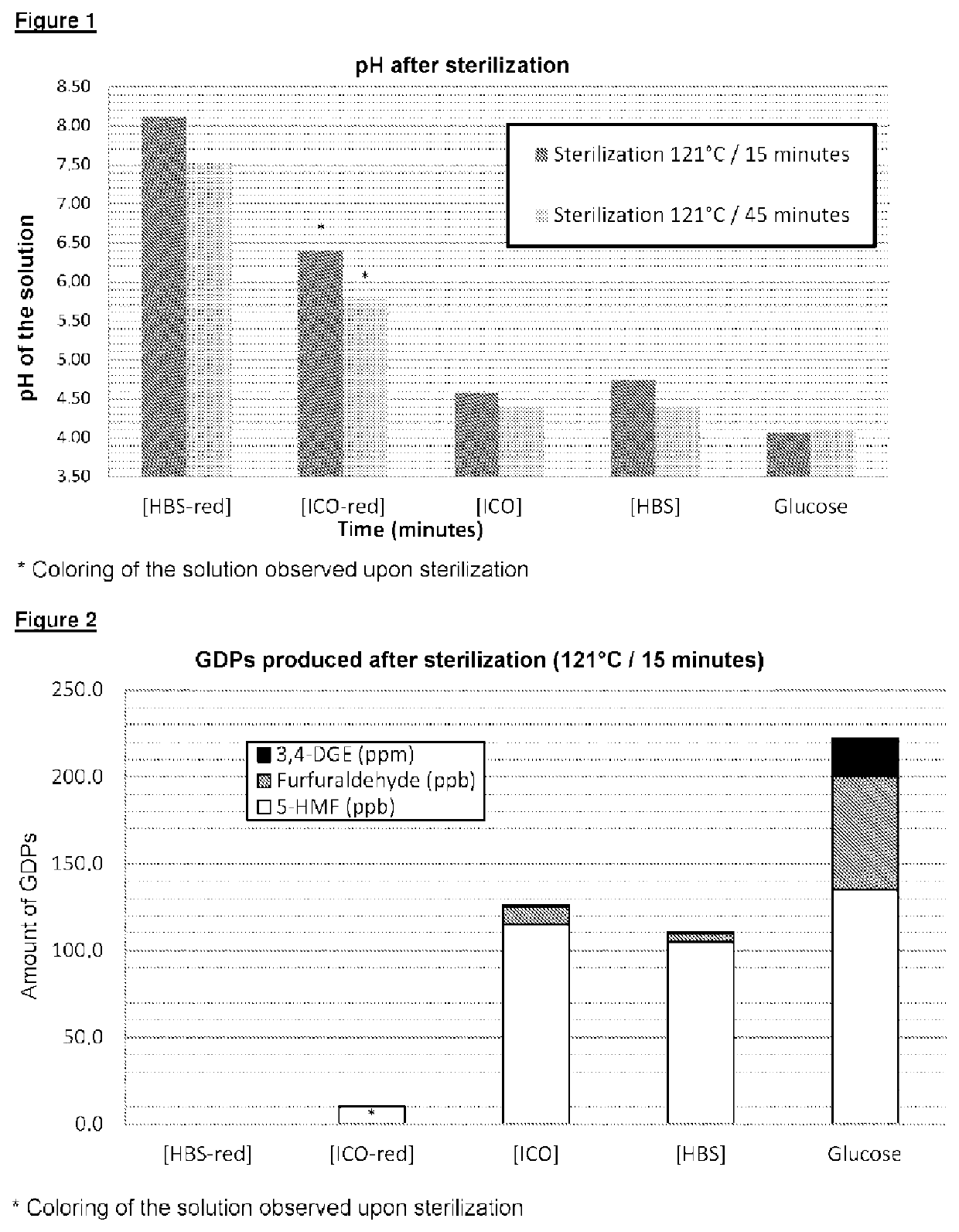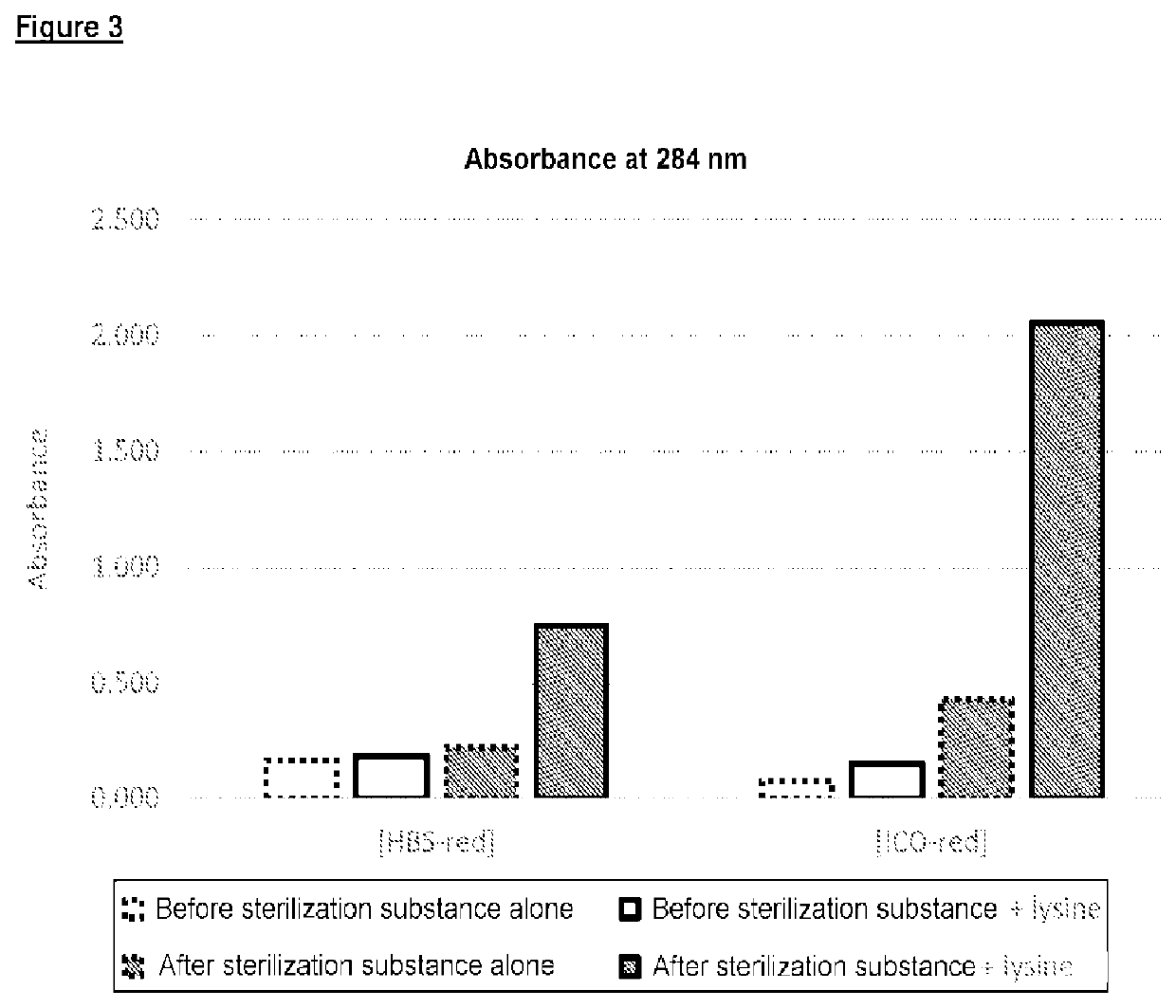Glucose polymers for peritoneal dialysis
a technology of peritoneal dialysis and glucose polymers, which is applied in the direction of drug compositions, extracellular fluid disorders, metabolic disorders, etc., can solve the problems of incompatible solutions, inability to meet the needs of hemodialysis, and inability to meet the needs of dialysis machines and other problems, to achieve the effect of avoiding the formation of aphtha sulfate and glucose polymer, and avoiding the formation
- Summary
- Abstract
- Description
- Claims
- Application Information
AI Technical Summary
Benefits of technology
Problems solved by technology
Method used
Image
Examples
examples
[0117]A. Substances Tested
[0118]1. Glucose Polymer According to the Invention [HSB-red])
[0119]The starch used had an amylose content of 65% (EURLYON® 7, Roquette). A starch starch milk (suspension) containing 10% solids and at a pH of 7.5 was cooked at 160° C. The paste obtained was cooled to 75° C., and the pH was adjusted to 7.0.
[0120]The starch was then subjected to a branching step by means of a branching enzyme (BRANCHZYME®, Novozymes), used in a proportion of from 625 to 1000 U / g dry of starchy matter, for 22 hours at 65° C. and at pH 7.0. The reaction medium was then cooled to 48° C., and the pH was adjusted to 5.5.
[0121]The branched starch thus obtained was subjected to a hydrolysis step by means of a β-amylase (OPTIMALT® BBA, Genencor International), used in a proportion of from 1 to 4 U / g dry of starchy matter, for 2 hours at 48° C. and at a pH of 5.5. The enzyme was then deactivated by heating for 1 hour at 85° C. The reaction mixture was cooled to 50° C. and the pH was a...
PUM
| Property | Measurement | Unit |
|---|---|---|
| Mw | aaaaa | aaaaa |
| polydispersity index | aaaaa | aaaaa |
| Mw | aaaaa | aaaaa |
Abstract
Description
Claims
Application Information
 Login to View More
Login to View More - R&D
- Intellectual Property
- Life Sciences
- Materials
- Tech Scout
- Unparalleled Data Quality
- Higher Quality Content
- 60% Fewer Hallucinations
Browse by: Latest US Patents, China's latest patents, Technical Efficacy Thesaurus, Application Domain, Technology Topic, Popular Technical Reports.
© 2025 PatSnap. All rights reserved.Legal|Privacy policy|Modern Slavery Act Transparency Statement|Sitemap|About US| Contact US: help@patsnap.com


